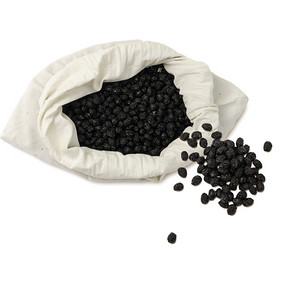Ethiopian coffee culture
Follow the caf é (Wechat official account vdailycom) and found that Beautiful Cafe opened a small shop of its own.
There are many cafes in the city streets of Ethiopia, and the cafes on the busy streets are often full of guests, with men and women sitting around, listening to music, talking and laughing. The cappuccino milk is sweet and the latte has a rich aftertaste. Black coffee is bitter but the original taste of coffee. I envy the life of the Ethiopians, who enjoy it in spite of being poor.
Ethiopia is the birthplace of coffee. The coffee culture of Ethiopia originated more than 1000 years ago and has a relationship with history and religious culture.
The traditional Ethiopian coffee culture can not be enjoyed in the coffee shop. It is a kind of coffee etiquette, or "coffee path". Coffee is made on the spot to entertain relatives, friends and distinguished guests to show the most sincere respect!
Today's Ethiopian airport and local restaurants will have "coffee path" performances, allowing guests to taste the world's most delicious coffee and learn about Ethiopia's "coffee path" culture.

Clay pots and charcoal stoves are used to make coffee. The black pottery pot has a round belly and a small mouth, like the figure of an Ethiopian beauty; the neck and mouth of the pot are engraved with geometric patterns, the wooden lid is dyed with red and green colors, and the pot holder is made of colorful English grass.
The new pot should be "raised" before use. After cleaning the pot, put into a small half pot of coffee dregs, add water to the charcoal stove to boil, boiling water with coffee dregs poof out together, so repeated several times, the pot will be "raised".
Pottery pots are large and small, and can be used separately according to the number of guests.
The "Ashram" of "Coffee Road" is to be covered with a layer of green grass called "Kotma". This kind of grass with long leaves has great vitality and grows vigorously as long as there is water, and once cut off, it will soon grow again. Every holiday, party day, shopping malls, restaurants and living rooms are covered with a layer of "Cottmar" grass. The green "Kotma" grass sends out a fresh breath, expressing the Ethiopian people's love for life and their desire for a new life.
Ethiopian men are taboo on making coffee.
On formal occasions to entertain guests and dignitaries, Ethiopian beauties, dressed in traditional Ethiopian clothes-a white embroidered dress with embroidered edges and a white headscarf on her head, sit at a table full of coffee cups to cook coffee.
There are more than 140 varieties of coffee in Ethiopia
Ethiopia in East Africa means "land inhabited by people tanned by the sun" in ancient Greek. Ethiopia's unique cultural tradition, spectacular scenery, pleasant climate, rich animal and plant resources, important places of interest, hospitality and friendly people make it one of the major tourist destinations in Africa.
The name Coffee comes from kaffa in Ethiopia.
Do you know? The root of coffee is in Ethiopia. It is said that the word coffee in English also comes from the place name "Kaffa" in Ethiopia. Legend has it that around 900 AD, when a shepherd in the Cafa region of Ethiopia was grazing in the mountains, he found that the sheep were competing for a kind of red berries. After eating, the sheep were excited and reacted abnormally. The shepherd was scared all night because he thought his sheep had eaten some harmful food. Who knew the sheep were safe and sound the next day. This unexpected discovery prompted shepherds to collect the wild fruit and boil juice to quench their thirst. He felt that the fruit juice was mellow and excited after drinking it. So he began to plant this plant, which led to the development of large-scale coffee cultivation, and the name of coffee evolved from the curry method. After that, coffee spread from Ethiopia to the world.
Coffee is as pure as a thoroughbred.
Ethiopia grows coffee in different climatic zones, so it has more than 140 farm varieties, and fresh coffee is produced all the year round. The quality of Ethiopian coffee varies according to different elevations and regional ecological environment. The Harar coffee in the southeast highland is a typical Muha coffee with strong aroma; the coffee produced in southwest Wollega has a rich fruity flavor; Limu coffee has wine and spice flavor; Sidamo coffee is mild, full-bodied and sour, while Yirgacheffee coffee has floral flavor. Taste Yega Xuefei, chocolate and sour taste more intense, like lemon flying, with a trance of flowers.
Interestingly, Ethiopians also put pictures of horses on the coffee package to show the purity of the coffee. It is said that in the era when horses were the main means of transportation, Ethiopians were proud that Ethiopia had the best thoroughbred horses in the world. Now they give this pride to Ethiopian coffee, "high-quality coffee should be as pure as thoroughbred horses". As a result of adhering to this concept, the taste of coffee here is still so mellow.
Important Notice :
前街咖啡 FrontStreet Coffee has moved to new addredd:
FrontStreet Coffee Address: 315,Donghua East Road,GuangZhou
Tel:020 38364473
- Prev

Starbucks Ethiopian Coffee
Following Cafe Review (Wechat official account vdailycom) found that Beautiful Cafe opened a small shop of its own Ethiopian Coffee Story: Arabica coffee beans have been popular all over the world since the 19th century. Now our coffee roaster has created a new way to lead us to better taste this precious coffee bean. This comprehensive coffee is mild and smooth, with floral and floral aromas.
- Next

Jamaica Blue Mountain Coffee Geographical Advantages and Tasting
Pay attention to the coffee review (Weixin Official Accounts vdailycom ) and discover that the unique flavor of Blue Mountain Coffee is related to the geographical location and climatic conditions of Blue Mountain. Generally speaking, south of the Tropic of Cancer and north of the Tropic of Cancer, this area is suitable for growing coffee and is called the Coffee Belt. Jamaica is just south of the Tropic of Cancer. Blue Mountains steep, fresh air,
Related
- Detailed explanation of Jadeite planting Land in Panamanian Jadeite Manor introduction to the grading system of Jadeite competitive bidding, Red bid, Green bid and Rose Summer
- Story of Coffee planting in Brenka region of Costa Rica Stonehenge Manor anaerobic heavy honey treatment of flavor mouth
- What's on the barrel of Blue Mountain Coffee beans?
- Can American coffee also pull flowers? How to use hot American style to pull out a good-looking pattern?
- Can you make a cold extract with coffee beans? What is the right proportion for cold-extracted coffee formula?
- Indonesian PWN Gold Mandrine Coffee Origin Features Flavor How to Chong? Mandolin coffee is American.
- A brief introduction to the flavor characteristics of Brazilian yellow bourbon coffee beans
- What is the effect of different water quality on the flavor of cold-extracted coffee? What kind of water is best for brewing coffee?
- Why do you think of Rose Summer whenever you mention Panamanian coffee?
- Introduction to the characteristics of authentic blue mountain coffee bean producing areas? What is the CIB Coffee Authority in Jamaica?

